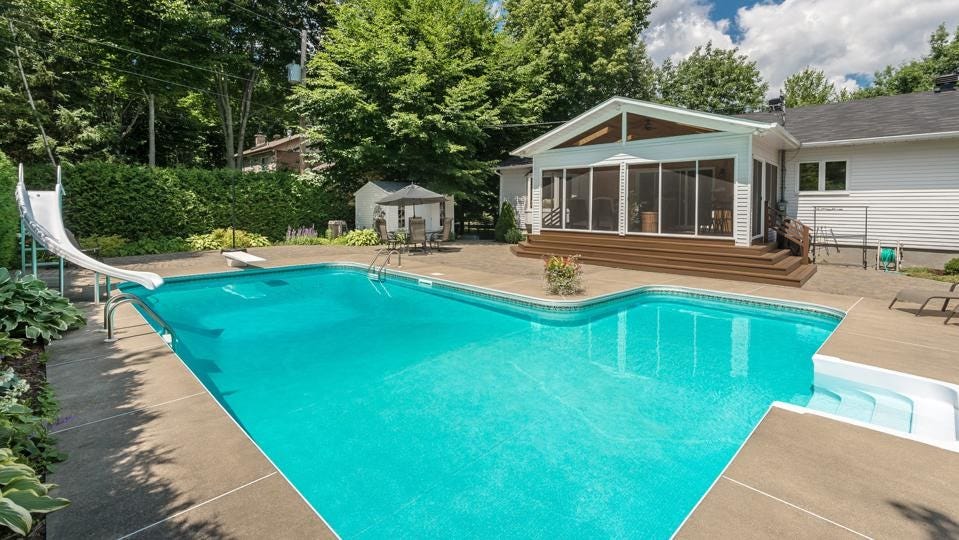How to Run Your Pool Pump on Solar Power

Many people dream of having a pool in their backyard, but few realise just how expensive it can be to run. Thankfully, you can cut the costs significantly by switching to a solar powered pool pump.
Why go solar for your pool?
The biggest incentive to power your pool pump off solar is the significant financial savings it can lead to. Running the pool pump is the most expensive part of owning a pool and may cost 15% to 20% of your home’s electricity usage when powered off the grid.
Solar power works by harnessing energy from the sun and converting it into a usable form of electricity. Unlike electricity from the grid which is predominantly obtained through burning coal, oil or natural gas, energy from the sun is free, clean and entirely renewable.
Not only is solar better for your bank account, it is also better for the environment. Energy consumption in Australia is responsible for a huge proportion of our carbon footprint. By switching to clean, renewable alternatives like solar power, we can reduce our impact on the environment. If you are looking for a great solar installer in Brisbane, contact Local Bunch Solar Brisbane for more information.
How do you run your pool pump on solar power?
There are two main ways you can power your pool pump with solar energy.
-
The first method involves buying a “Direct Current” pool pump which is then connected to a set of dedicated solar panels.
-
The second method is installing solar panels to power your home and then using these to also power your pool pump.
We dive into more details about each method and their pros and cons below.
Method 1: Direct Current pool pump connected to solar panels
This method is essentially about creating a dedicated solar panel system for your pool pump. You will need to buy a special solar pool pump called a direct current or DC pool pump.
The DC pool pump will then be connected to a dedicated set of solar panels which are placed nearby to the pool. Usually there will be around 4 to 6 panels, but this will depend on the size of the pool and the amount of watts your DC pump runs on.
Unlike a solar power system for your home, these solar panels for your pool pump are not connected to the grid. That means they don’t power anything else except your pool pump. Any excess energy generated by the solar panels will not be used and can’t be sent back to the grid for a feed-in tariff.
Advantages:
-
You may be eligible for solar rebates.
-
The solar panels aren’t connected to the grid, meaning you will never pay for electricity from the grid to power your pool pump.
-
The solar panels don’t need to be installed on the roof.
Potential drawbacks:
-
You will need to buy a new pool pump – you can’t connect your current non-solar pump.
-
You won’t receive a feed-in tariff for excess energy produced by the solar panels.
-
If the solar panels don’t produce enough energy (for example on an overcast day) you can’t use power from the grid as a backup.
Method 2: Grid-connected solar panels for the entire home
If you already have or are considering installing a large solar power system to power your home, you may also be able to power your pool pump off the system.
Grid-powered pool pumps are usually run at night when the electricity rates are lowest. However, with a solar powered pool pump, you will want to set your pump to run around midday when the sunlight is most strong.
In summer when you are using the pool a lot, set the pump from around 10am to 3pm in. In winter, you can run it less often, say from 11am to 1pm.
If the solar power system doesn’t generate enough electricity, for example on a very overcast day, power from the grid will be used to make sure your pool pump keeps running. While this may cost more, it will ensure that your pool is always clean and well maintained.
Advantages:
-
Experience savings from running your home appliances as well as your pool pump.
-
No need to replace your existing pump.
-
Excess energy can be sold back to the grid for a feed-in tariff or stored in batteries to use during night time hours.
Potential drawbacks:
-
Initial cost is high – you will need a large solar power system to run your home and your pool pump – typically 6kW or larger.
-
May not work as efficiently on very overcast days – power will then be drawn from the grid to run the pump.
Heating your pool with solar power
If you want the luxury of a heated pool without the large power bill, there are some options for heating your pool with solar power too.
Some solar pool pumps also come with a solar heat exchanger component which uses the heat generated from the pool pump as it runs to heat up the water. The heat energy which would otherwise be wasted is utilised to warm up your pool.
Tubular pool heaters are a more expensive option in which cold water is pumped behind solar panels where they absorb heat before being pumped back into the pool.
A much cheaper option for warming your pool is to buy solar mats which are essentially pool covers designed to absorb heat from the sun. The heat is then transferred to the water passively.
Which solution is right for you?
The DC pool pump and dedicated panels method is a good choice if you don’t have much roof space or if you have reached a limit on the amount of grid-connected solar panels you can install.
However, if you are looking for the biggest energy savings possible, investing in a solar power system for your entire home is the way to go. For information about solar panels in Rockingham, Mandurah and Perth, speak to a solar power specialist who can advise you on the best solution for your needs.

